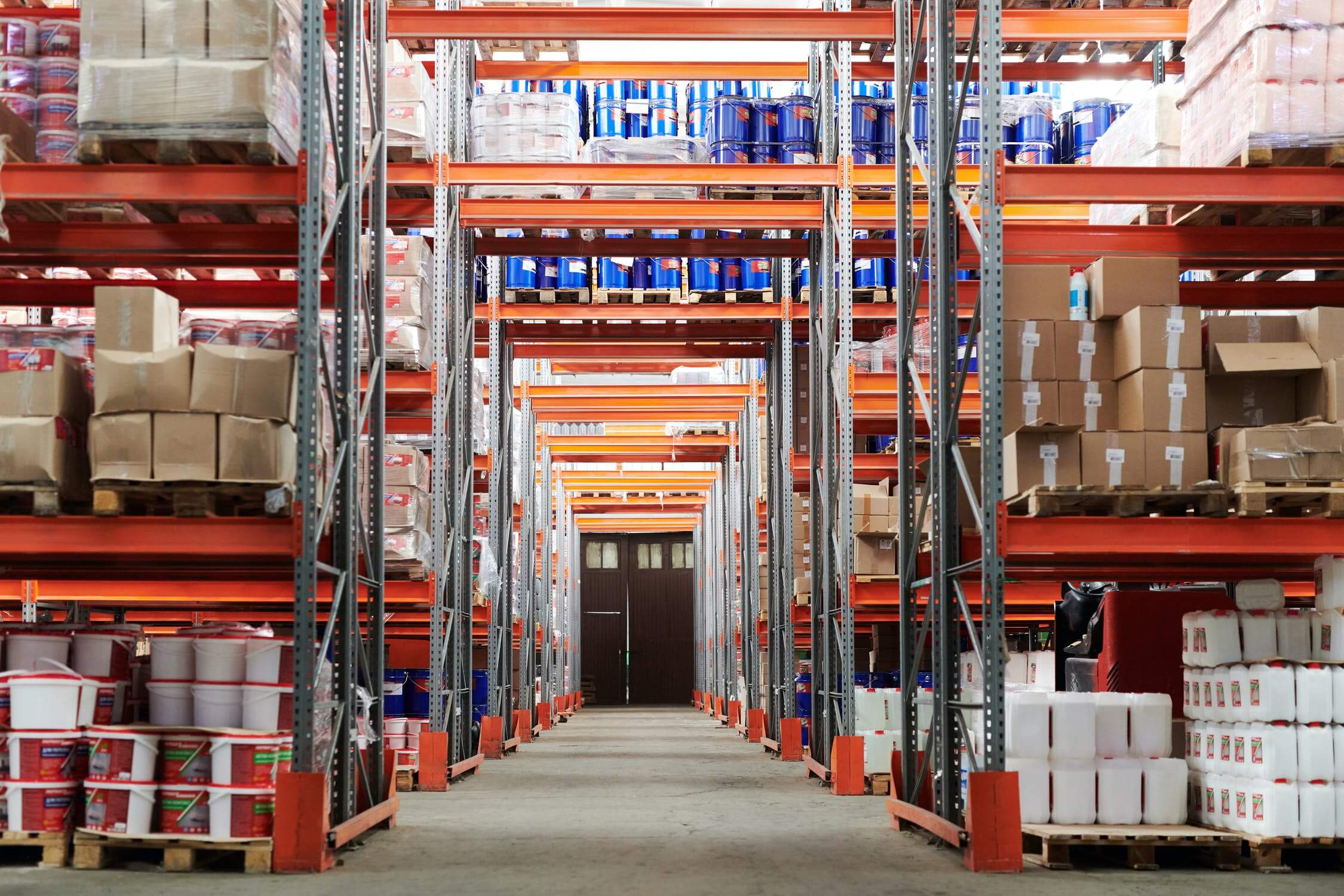The use of data within the supply chain is a common topic today. Faced with ever-increasing, demanding and unpredictable demand, logistics is often put to the test.
Recent events illustrate this perfectly; the COVID-19 crisis and quarantine measures have caused online sales to skyrocket sharply. This has been a real challenge for e-commerce stakeholders, who have had to adapt to rapid changes in flows, on both supplier and customer ends.
In this context, the use of data is a very valuable asset.
Why should you make use of your supply chain data?
Anticipate supply needs
With data, it becomes possible to predict demand. A real dream for any supply chain manager!
Short and medium-term customer needs can be anticipated by analyzing certain pieces of information:
- Sales figures
- Seasonality of products
- Geographical area
- Signals sent by users on social media, forums, etc.
Based on all this (and other factors specific to the company’s business sector), it is possible to refine sales forecasts considerably, and thus estimate the lifespan of each product very accurately.
In addition, the data allows for an optimization of orders from suppliers by better assessing their compliance and quality. It is also possible to group purchases in a more relevant and cost-effective manner.
Limit the risk of stock shortages
The predictive power of data not only allows for a refinement of sales management, but also for a considerable improvement to inventory management.
Having the right product in the right place, in sufficient quantities: the stakes are high. If there are too many, there is a risk of warehouse saturation (and therefore a high storage cost). If there aren’t enough, there is a threat of an inventory shortage…
Risks that can be largely limited by the study of certain data:
- Predicting demand makes it possible to estimate the quantity of products that should be present, for a given period of time.
- The study of external factors, such as those affecting transit times (weather conditions or road traffic disruptions) or raw material supply problems.
Data is therefore very useful for maintaining an optimal inventory turnover rate and, ultimately, ensuring customer satisfaction by avoiding any shortages.
Better management of human resources in the warehouse
In warehouses, human resources management is another crucial point. Main challenge: avoiding situations of under-staffing or over-staffing.
It is therefore necessary to anticipate the volumes of merchandise to be shipped in the short and medium term, in order to plan and organize the teams’ tasks, and thus improve performance. With artificial intelligence, for example, it is possible to distribute tasks automatically according to the needs at the moment.
Therefore, various parameters must be thoroughly monitored:
- Increase or drop in sales
- Supply lead times
- Launch of a new product…
If one of these changes, the supply chain can instantly adapt. Interim workers can be called upon to temporarily increase the workforce, adapt transportation, set up specific equipment to ensure the reception of merchandise, etc. All this thanks to the predictions offered by data.
Faster detection of anomalies
Improving the performance of the supply chain also means reducing the presence of anomalies. For this, it is necessary to detect problems as early as possible, as well as diagnosing them quickly. The resulting suggested improvements can then be followed up on as soon as the next orders are placed. Some visual analysis technologies are used, for example, to inspect merchandise arriving in warehouses to assess their compliance. Defective items can then be separated very effectively.
But more so than detecting anomalies, it is possible to go even further by anticipating them. With a clever mix of data and IoT (Internet of Things), a real predictive maintenance system can be implemented. Sensors and other connected objects allow real-time monitoring of processes throughout the supply chain. Possible defects or errors can therefore be avoided before it is too late.
Optimize delivery routes
We are now at the end of the supply chain: a step that should not be neglected under any circumstances!
In fact, delivery is of particular importance, especially for customer satisfaction. The carrier must therefore meet several requirements:
- Meeting delivery times
- Ensuring the product is in perfect condition once delivered
- Delivering the right product, to the right person, to the right place…
To this end, the data can be used to optimize delivery routes (e.g., based on road disruptions), but also to help the company choose the most suitable carriers. Delivery cost, ability to transport specific products, compliance with particular standards, packaging requirements, etc. These are all criteria that can be easily examined and compared using data.
To read : Data at the service of an agile supply chain (French version)
The essential data of your supply chain
As we’ve seen, your supply chain data is a gold mine. But which data should be collected first?
There are several categories of data inherent to the supply chain:
- Products: price, brand, lifespan, seasonality, etc.
- Suppliers: terms of purchase, delivery times, discounts and commercial gestures, catalog, etc.
- Customers: loyalty, preferences, contracts, etc.
- Movements: stock, orders, sales, inventories, etc.
- Logistics network: warehouses, stores, vehicle fleets, etc.
In addition, there is a multitude of external data, be it demographic, economic, political, or environmental. Depending on your business sector and your customers, many factors can have a direct impact on your supply chain.
Data and supply chain: what are the prerequisites?
Centralize data
All businesses have data. However, the data is often scattered or dispersed among different sources, which makes finding and using it quite complex. In fact, data must be extracted independently and cross-referenced to obtain indicators. This practice is both a source of error and uncertainty.
Fortunately, a unified database solves the problem. By centralizing the data, decision-makers are guaranteed access to the most relevant information at the best time.
To build a single database, it is necessary to standardize practices throughout the organization. The way of structuring and querying the data, as well as the way of calculating KPIs must match up.
In most cases, a team dedicated to data analysis and the creation of dashboards is essential, while ensuring close collaboration with decision-makers, but also with business users.
Provide the necessary technical resources
To be used efficiently, data requires a solid infrastructure. This means that you must have the technical resources to incorporate, store, prepare, analyze, and retrieve large amounts of complex data.
To be strong enough, this infrastructure must meet two main criteria:
- The tools and practices must be consistent throughout the company, including data collection.
- You must have enough storage capacity, which implies powerful servers and data warehouses.
Otherwise, your project will be limited from the start and you will not be able to fully use all your data. So make sure you implement the right technical resources: your supply chain will thank you!
Securing the data
When it comes to data, security is a major issue. This is particularly the case when it comes to confidential data. Moreover, this data concerns both your company and your customers: names, contact details, payment information, etc. This is sensitive information that you must protect at all costs!
The way you store your data plays a major role here. The choice of an ‘On Premise’ installation, i.e. on the company’s internal servers, should be considered. This solution offers a high level of security (at least, if it is done well) and allows you to free yourself from any external service provider.
However, the trend today is moving more towards the cloud, which allows you to store your data on a remote server. In addition to its economic interest, this turnkey option is less restrictive: you are free of server maintenance and your data is accessible everywhere, all the time. In addition, major cloud players offer a high level of security while duplicating your data in different data centers, guaranteeing its preservation in the event of an incident.
It is in this regard that DigDash signed a partnership with OVHcloud in 2020.A collaboration that allows data visualization specialists to pursue their ambitions. Namely, to provide their customers with a 100% French cloud service, that is secure and respectful of user data
Use agile software to exploit your data
In addition to infrastructure, the tools used to explore and analyze the data have an essential role to play. In particular, you can rely on agile and intuitive software that allows you to build dashboards and monitor precise indicators.
To be fully effective, this solution must be able to be deployed throughout the company, in a logic of homogeneity. This implies exemplary versatility and performance, but also a certain versatility. A good tool must be accessible to data analysts as well as to decision-makers and business users.
Data is a real source of opportunities to optimize your supply chain at different levels: sales management, inventory management, customer satisfaction, etc. However, the implementation of a data project of this scale requires good preparation, with the implementation of infrastructures, practices and efficient tools.
DigDash is a powerful, easy-to-use and agile data visualization and business intelligence software, able to meet the challenges of your supply chain.
La data est une véritable source d’opportunités pour optimiser votre supply chain à différents niveaux : pilotage des ventes, gestion des stocks, satisfaction client… Toutefois, la mise en œuvre d’un projet data de cette envergure nécessite une bonne préparation, avec la mise en place d’infrastructures, de pratiques et d’outils performants.
DigDash est un logiciel de data visualisation et de business intelligence puissant, simple d’utilisation et agile, capable de répondre aux enjeux de votre supply chain.
To learn more, read our article: Retail : Why you need to adopt Business Intelligence


